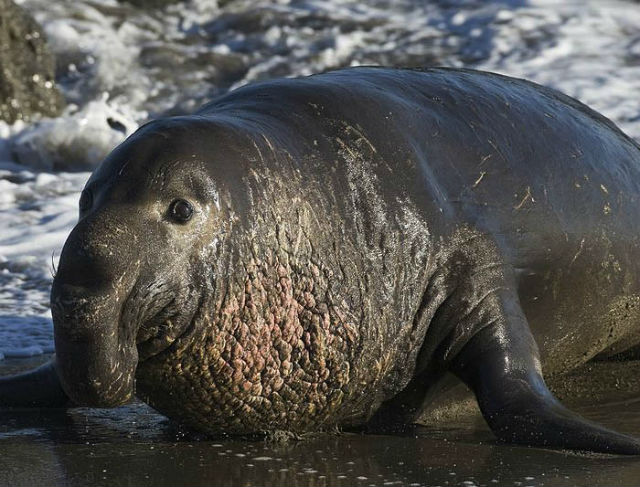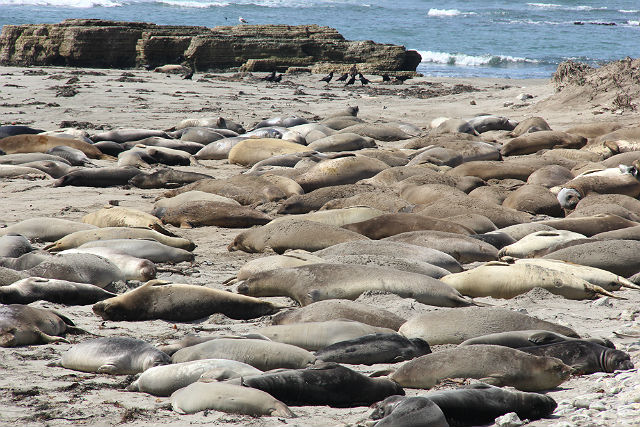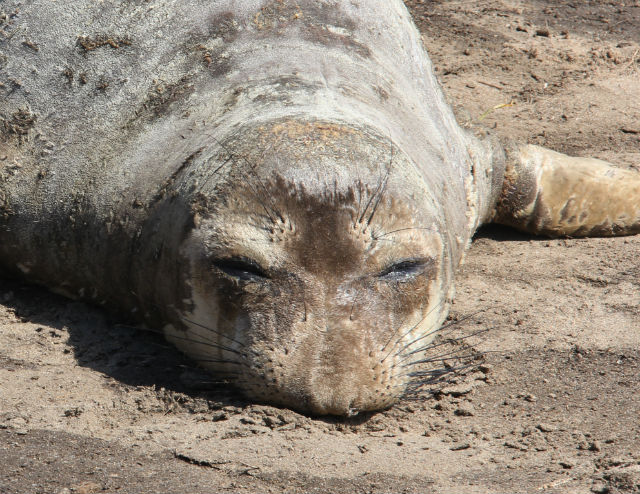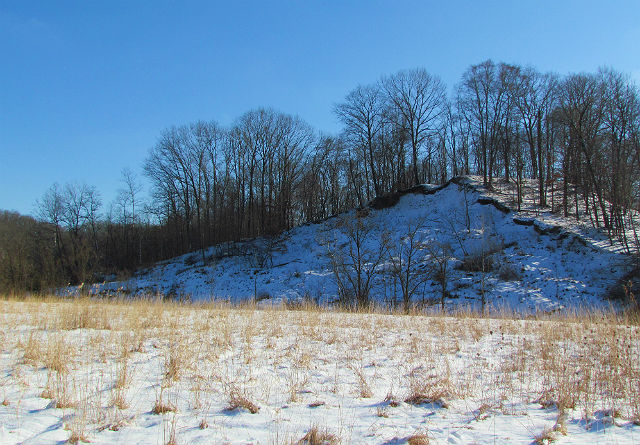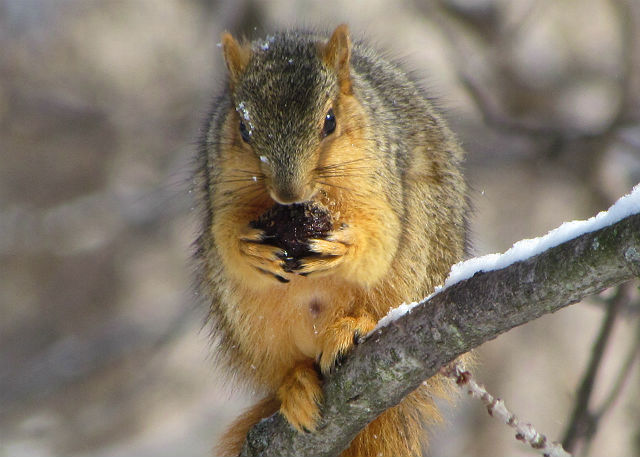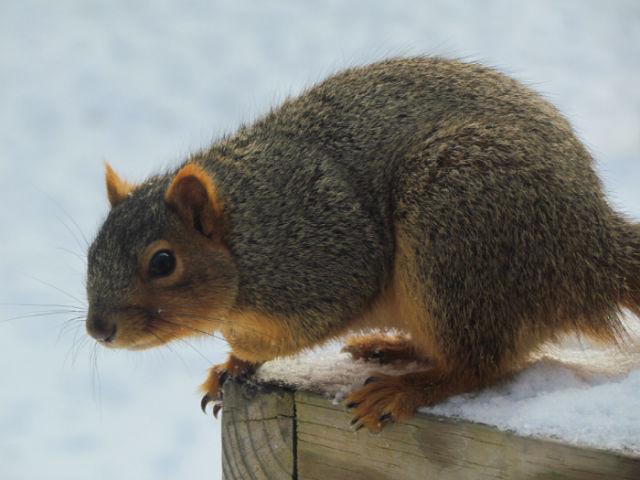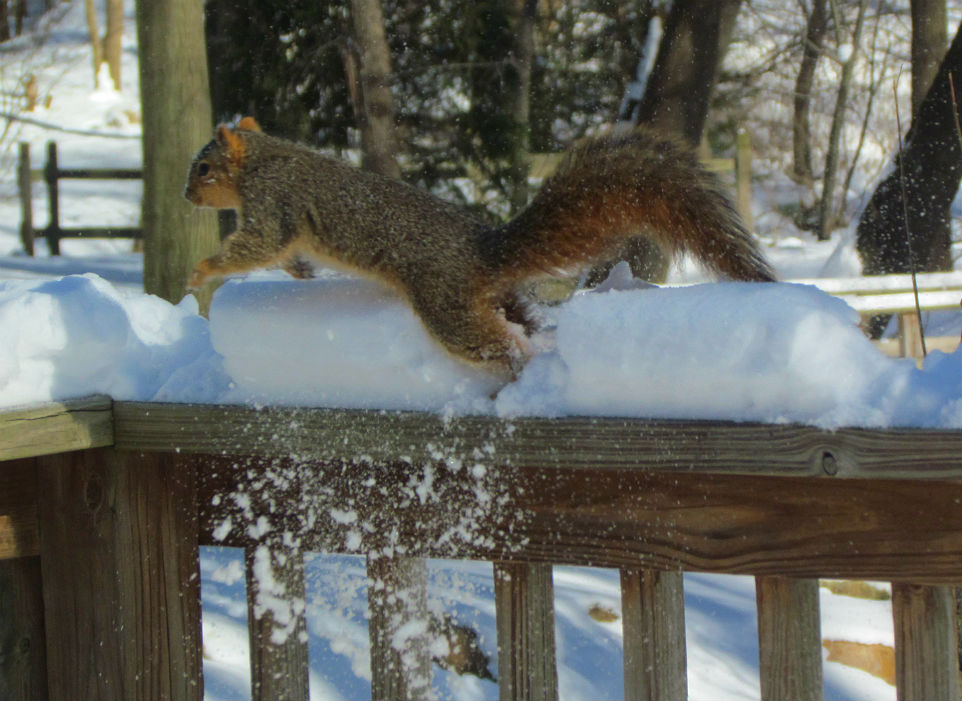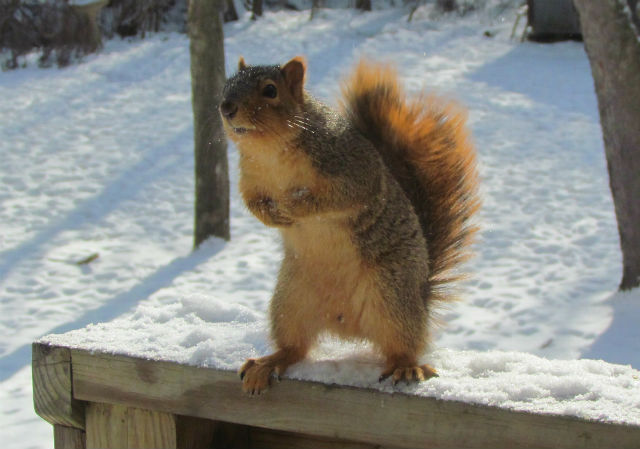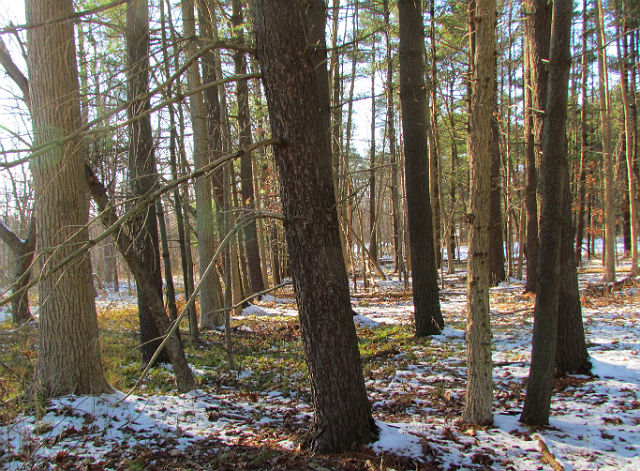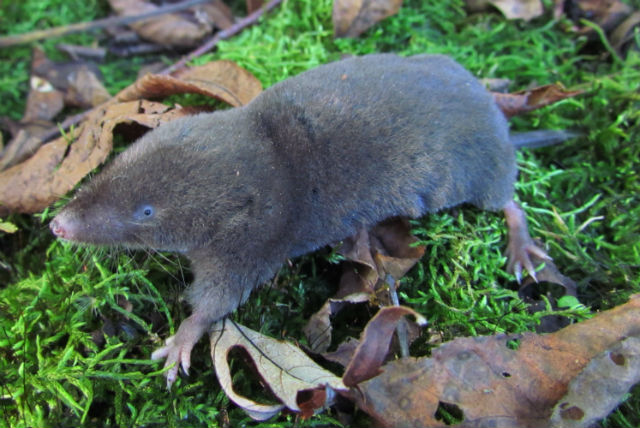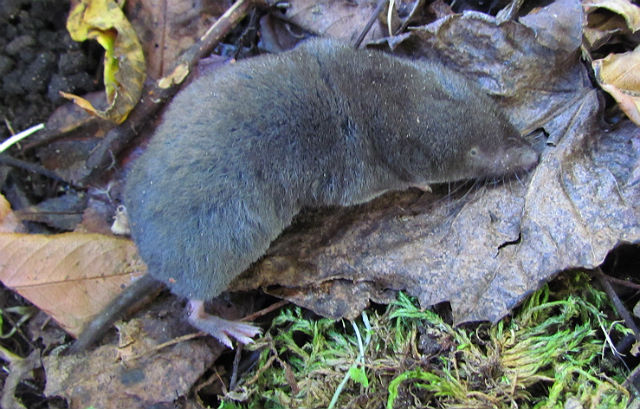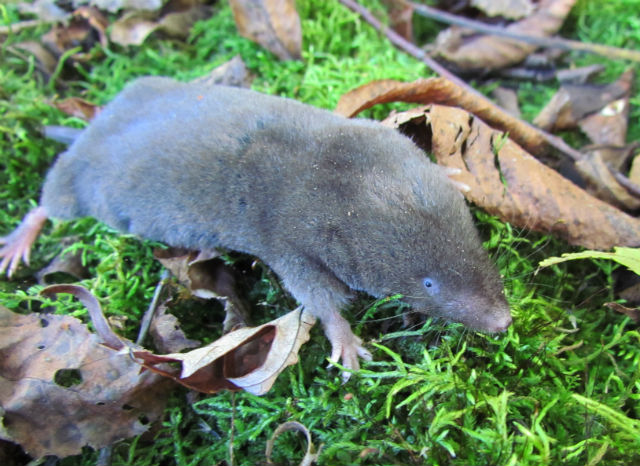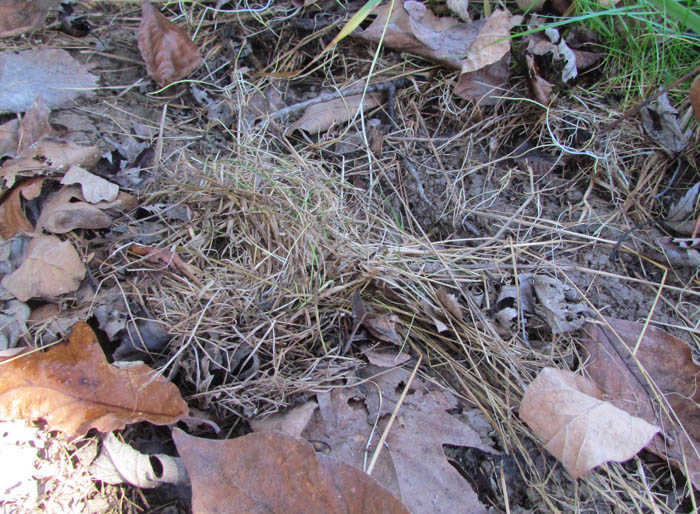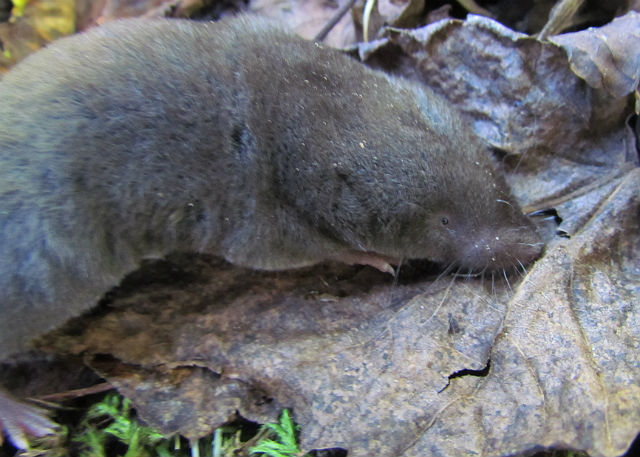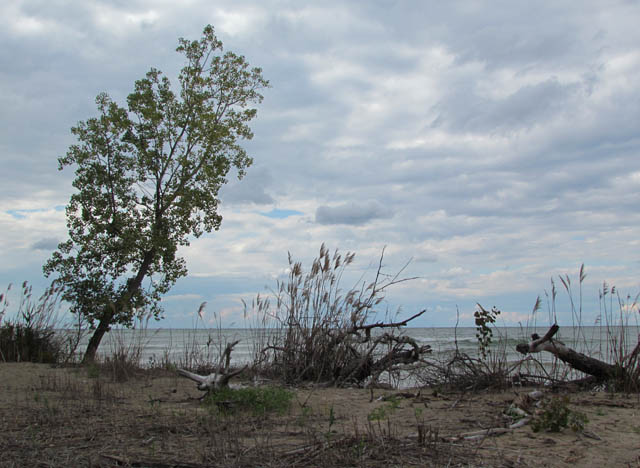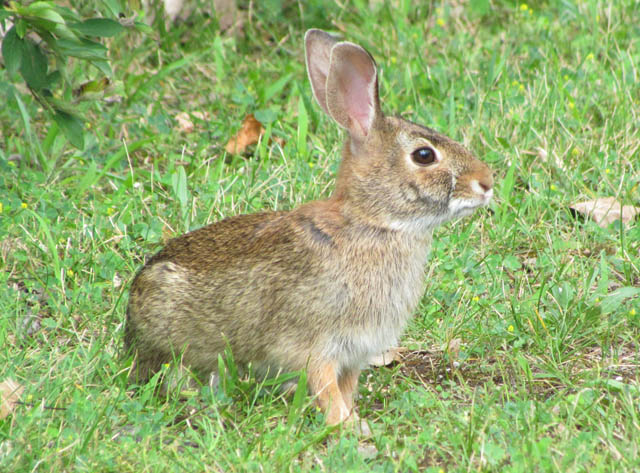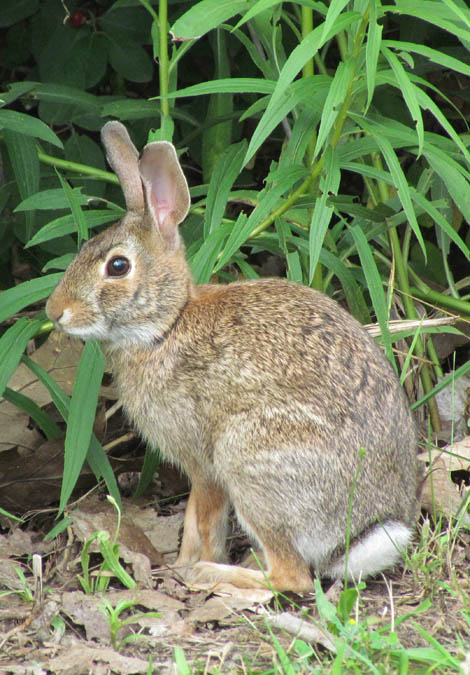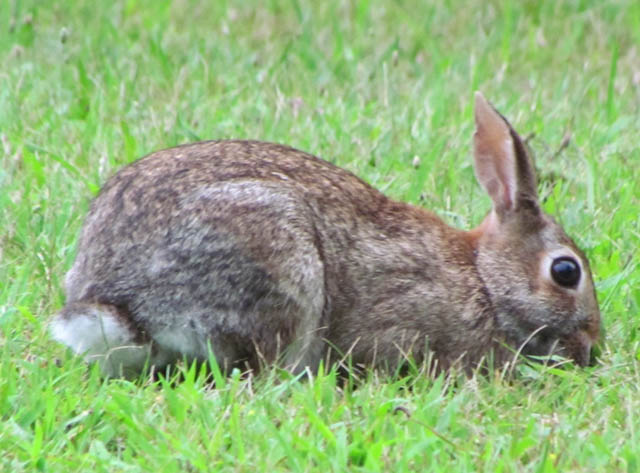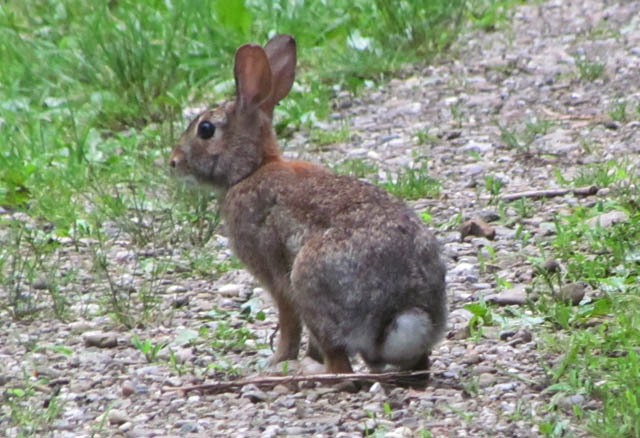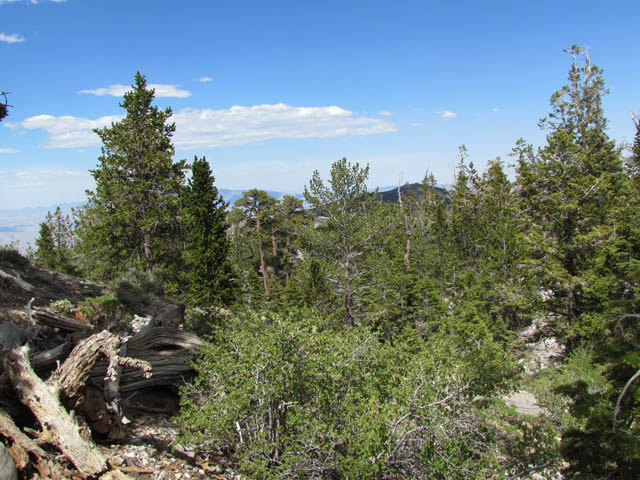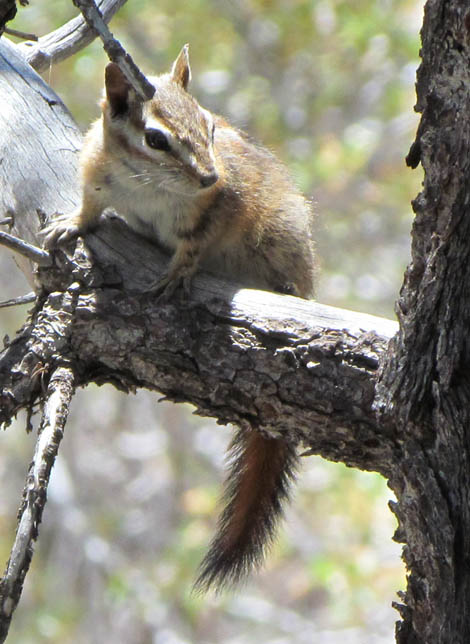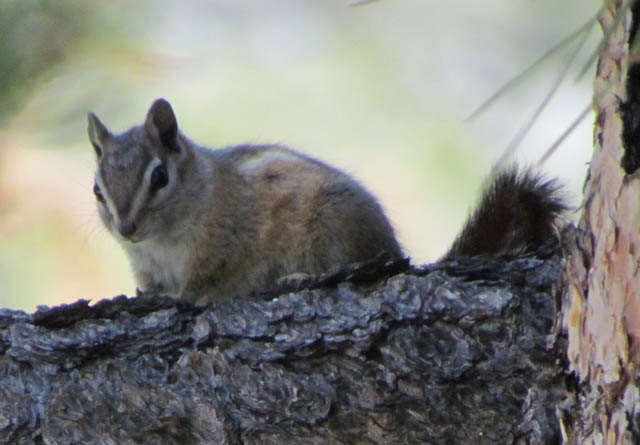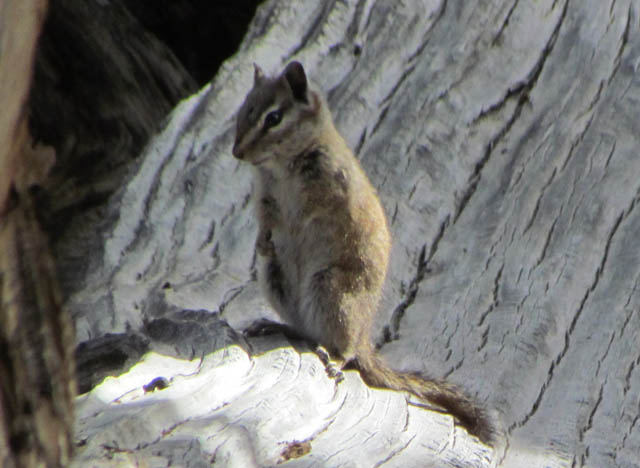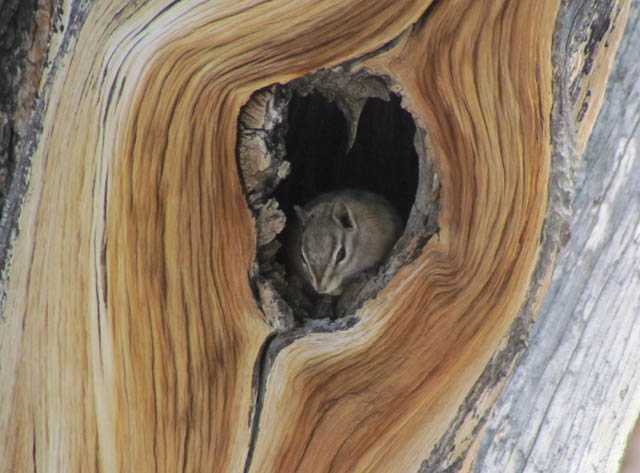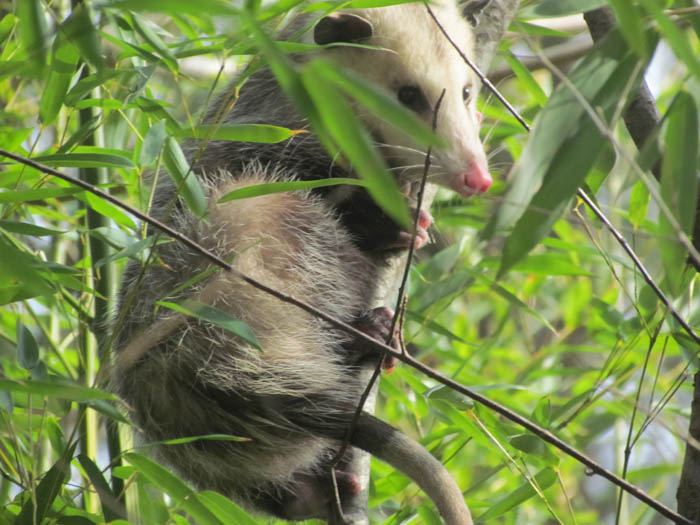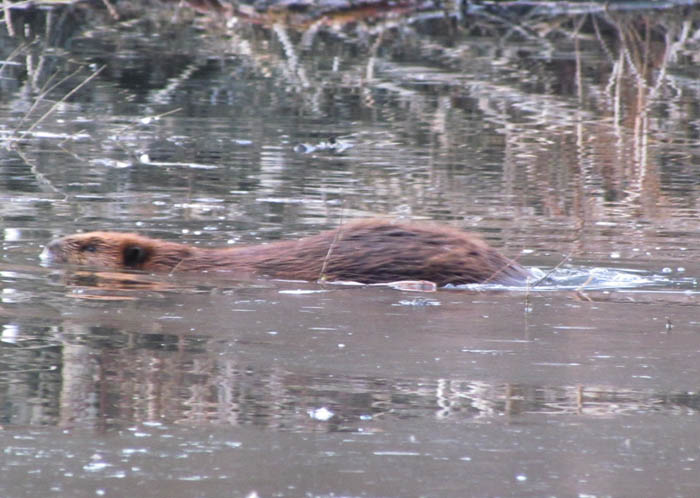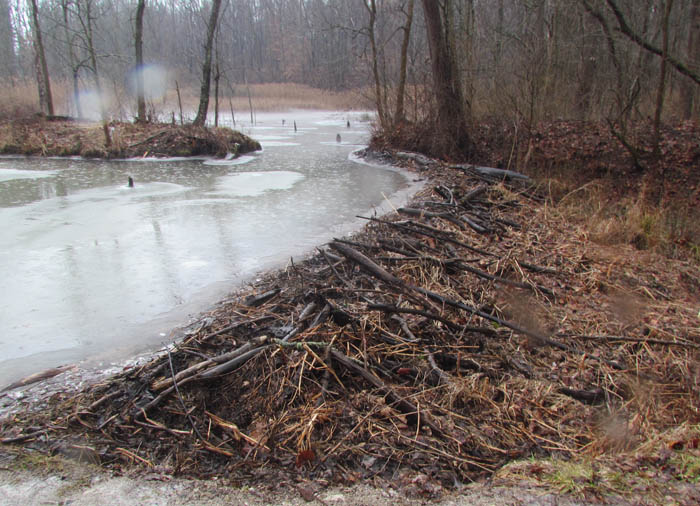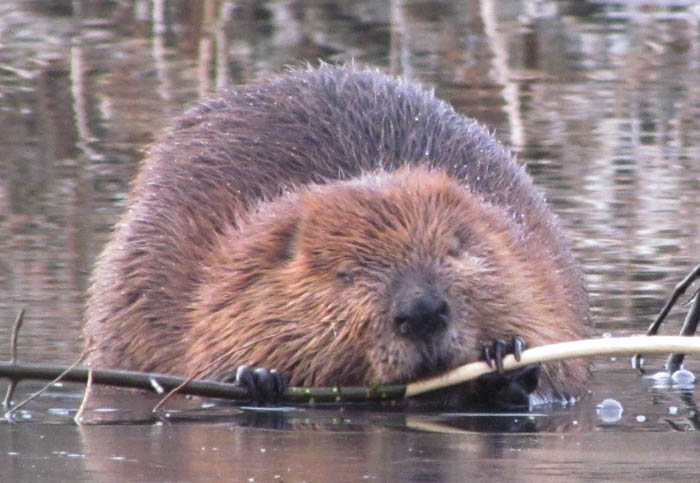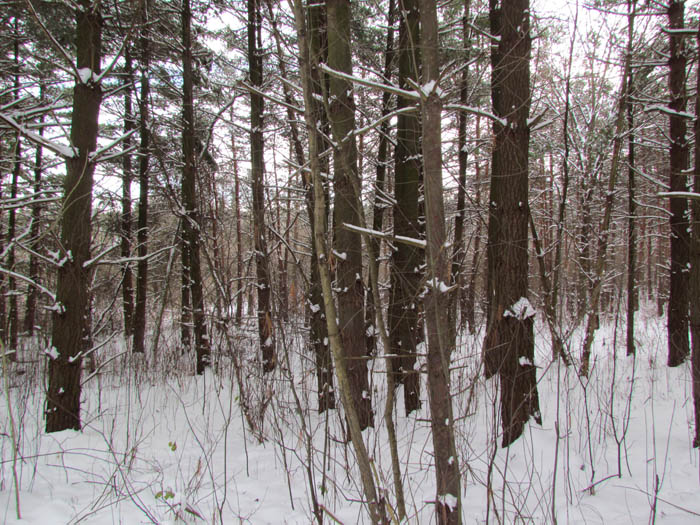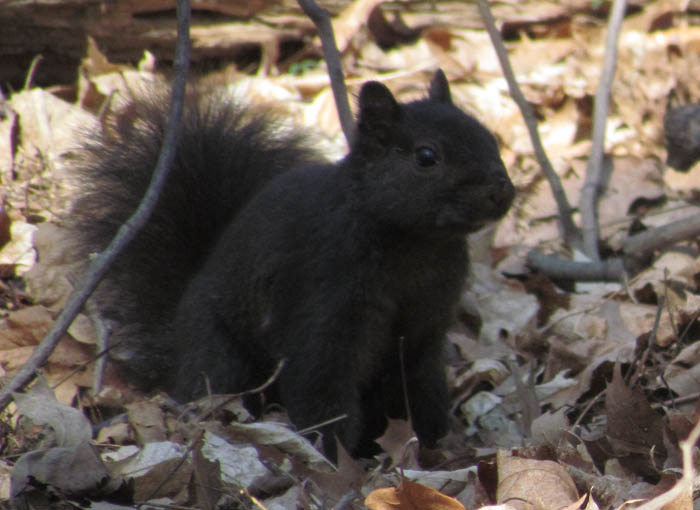Renowned for their long distance migrations and their incredible diving abilities, Northern Elephant Seals are named because of the long elephant-like noses of males.
The many that I saw at Año Nuevo State Reserve today were females with their offspring, which were born earlier this year.
Northern Elephant Seals were almost hunted to extinction for the oil that could be rendered from their blubber. By 1892, only 50 to 100 individuals were left. In 1922 the Mexican government gave protected status to Northern Elephant Seals and the US government followed suit a few years later.
These are not small animals. Males, known as bulls, range from fourteen to sixteen feet long and weigh up to 2-1/2 tons. At sea, they can stay underwater for 20 minutes and dive to a depth of 1,000 to 2,000 feet in search of their food: rays, skates, squid and small sharks.
The pups are very curious and rather awkward. They are somewhat afraid of the water at first. But they learn quickly, spending more and more time swimming about. Then, during the last weeks of April, they go out to sea one by one.


